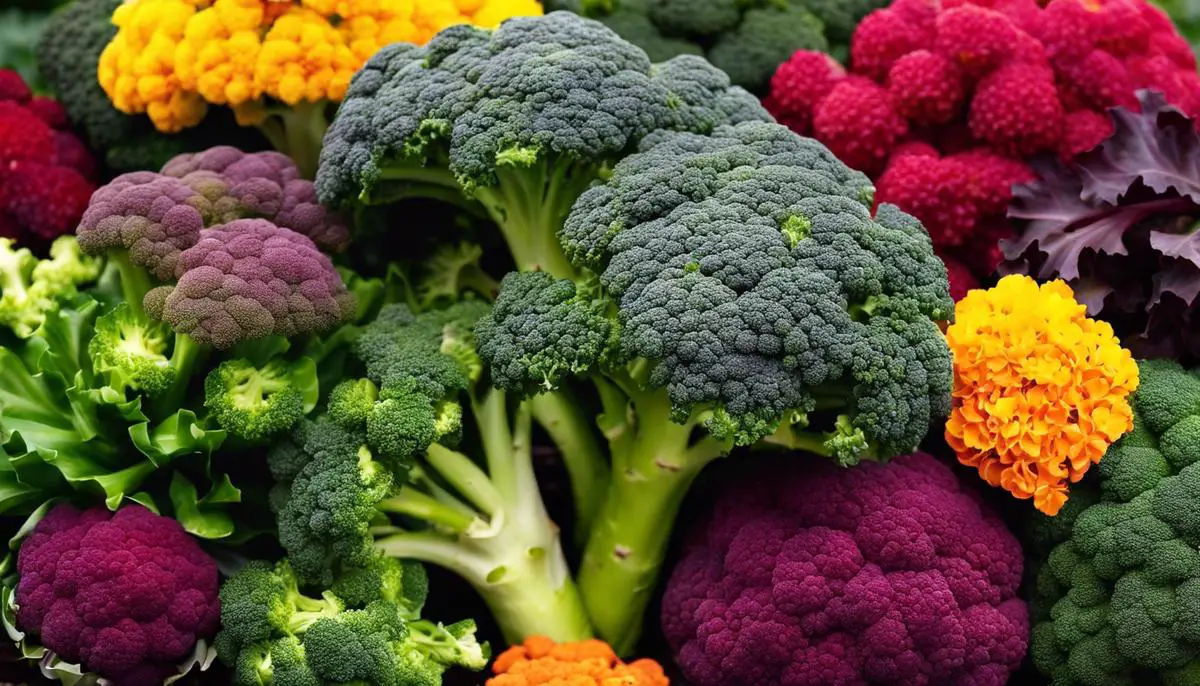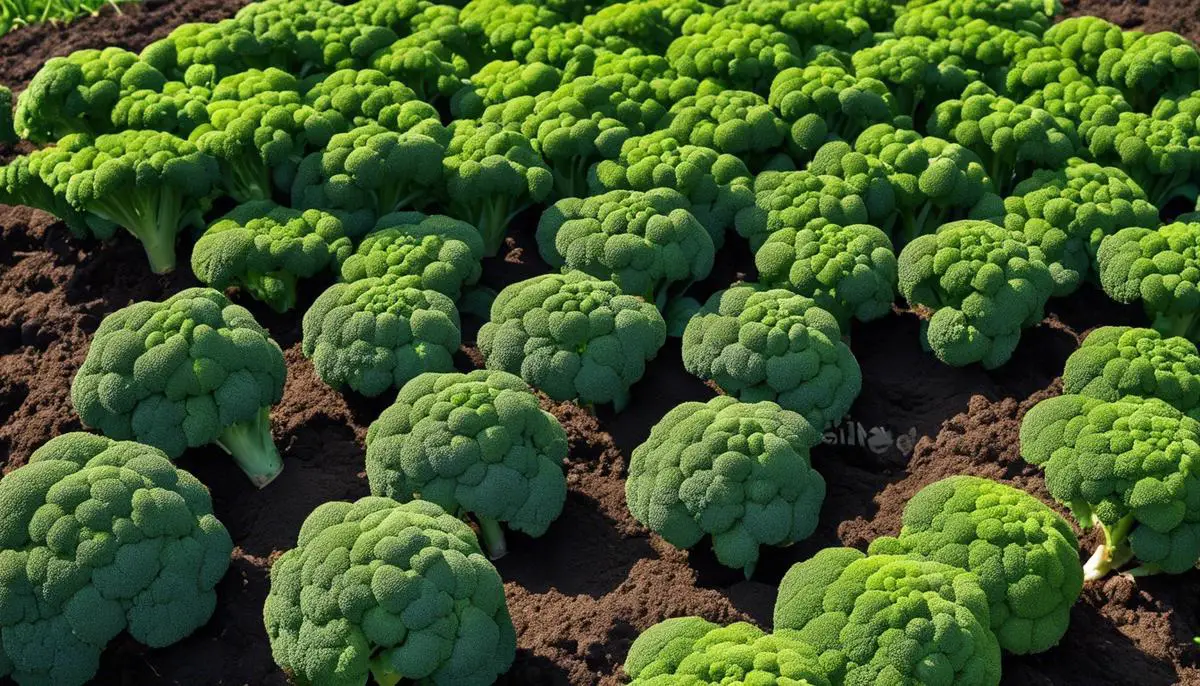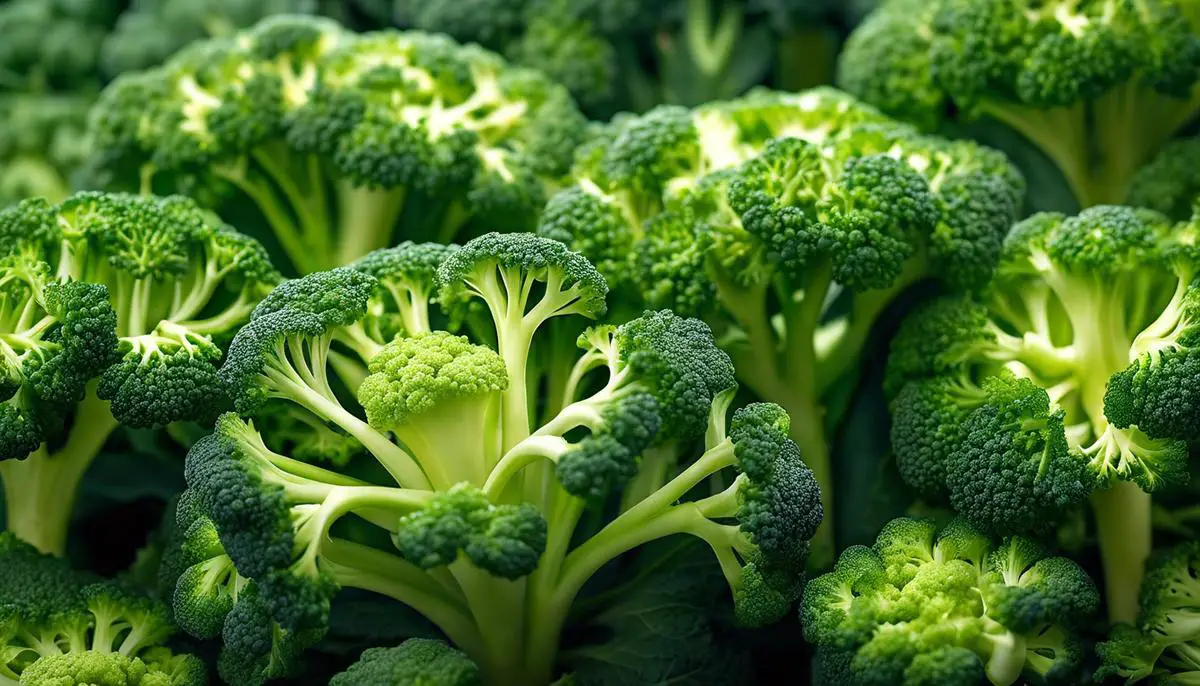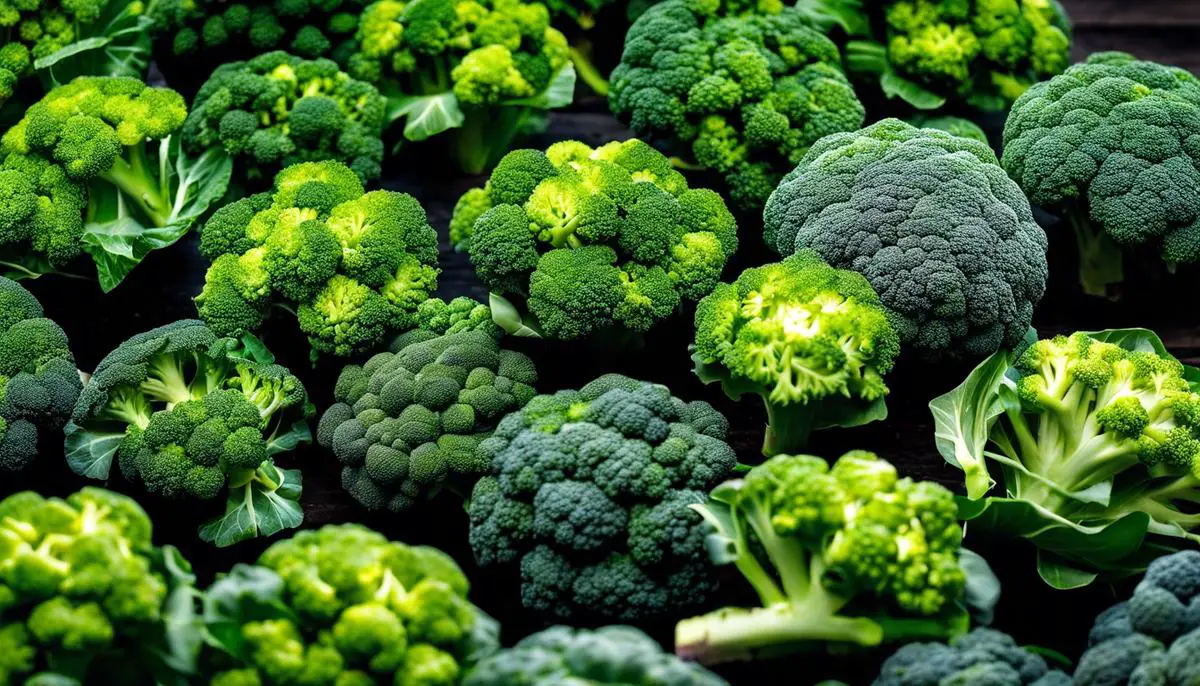Gardening enthusiasts often seek the gratifying experience of growing their own vegetables, and broccoli stands out as a nutritious and versatile crop that can be enjoyed in a variety of dishes. To embark on the journey of cultivating this green gem, one must first delve into the particulars of broccoli varietals, each with unique attributes and suitability to different climates and seasons. The key to a bountiful broccoli harvest lies not only in choosing the right variety but also in providing the plant with an environment in which it can flourish. Equally crucial are the foundational steps of soil preparation; getting your hands dirty in the name of creating rich, well-drained, and pH-balanced earth is all part of the gardener’s labor of love. As we venture further into the nuances of sowing and nurturing these verdant stalks, let’s uncover the secrets to thriving broccoli plants that will make your garden a beacon of green bounty.
Selecting the Right Broccoli Variety
Green Thumb Guide: Picking the Perfect Broccoli Variety for Your Garden
Hey there, fellow green thumbs! Are you dreaming of beautiful broccoli florets sprouting up in your garden? Well, you’re in luck! With a bit of know-how, choosing the right broccoli variety for your garden is like finding the perfect gardening glove – a perfect fit. Let’s dive right into the world of these green wonders and pick out the best one for your patch.
Reader Poll: What online courses would interest you?
First up, climate is key. Broccoli loves cool weather, thriving in temperatures between 65°F and 75°F. If you’re gardening in a spot with mild winters and cool summers, you hit the broccoli jackpot! But don’t worry if your area sways a bit hotter or colder – there’s a variety for nearly everyone.
Now, let’s talk timing. There are two main types to consider: early-season and late-season varieties. For a quicker harvest, early-season choices like ‘Calabrese’ or ‘De Cicco’ will do the trick. These fellows mature in a flash (50-70 days). Got a bit more patience and looking for something to beat the cold? Late-season varieties such as ‘Waltham 29’ are stalwart against chillier temperatures and take a little longer (70-100 days) to mature.
Size matters – in broccoli land, at least! If you have a smaller space or just fancy something a little less Goliath, opt for a compact variety like ‘Small Miracle’. This pint-sized powerhouse can fit in tighter spots and still deliver a bountiful harvest. On the flip side, if you have room to roam, ‘Green Goliath’ will give you large heads and plenty of side shoots.
Subscribe to our newsletter!
Broccoli’s not just green! Surprise your palate and your garden visitors with a splash of color. ‘Purple Sprouting’ varieties or the quirky, spiral-shaped ‘Romanesco’ bring both a visual and a taste twist. These unique types might need a bit more care, but they’re showstoppers.
Pest and disease resistance should be part of your selection process. Do a little local research or chat with your friendly neighborhood gardeners to find varieties that can stand up to the common troubles in your area.
Nutrition nuts, rejoice! Some newer varieties boast higher levels of vitamins and antioxidants. A variety like ‘Beneforté’ ramps up the health factor with extra glucoraphanin, a nutrient with a big reputation for its potential health benefits.
Finally, it’s all about taste. Maybe you enjoy a tender stem or a more buttery flavor. Varieties like ‘DiCicco’ or ‘Belstar’ can offer a great taste and versatile use in your kitchen.
Alright, are you ready to turn that broccoli dream into a vegetable reality? Dig into seed catalogs, online gardening forums, and local garden centers to find these recommended varieties or unearth some hidden gems of your own.
Choosing the best broccoli for your garden is just a matter of marrying your growing conditions, space, and taste preferences with the right variety. Get those seeds in the ground and, before you know it, you’ll be the broccoli baron of the neighborhood – minus the crown, but with a basket full of delectable greens. Let those broccoli adventures begin!

Preparing the Soil for Broccoli
Soil Preparation for Thriving Broccoli Plants
Broccoli, with its robust nature and sumptuous green heads, is a rewarding addition to any garden. But before visions of delicious stir-fries and crisp salads become reality, it’s crucial to start with the foundation of any great garden venture: soil preparation. This step ensures your broccoli plants have the best environment for strong growth.
The Right Soil Composition
Broccoli thrives in well-draining, fertile soil. Aim for a loamy soil – a mix of sand, silt, and a good amount of organic matter. The goal is to create a structure that retains moisture without becoming waterlogged, a condition that can spell disaster for your plants.
Ideal pH Levels
The pH level of your soil is like the secret password to plant health. Broccoli prefers slightly acidic to neutral soil, with an ideal pH range of 6.0 to 7.0. Using a soil test kit available at most garden centers can reveal the pH of your soil, granting you the insight needed to amend it accordingly.
Enriching with Organic Matter
Broccoli is quite the hungry plant; it enjoys a feast of rich, nutrient-packed soil. Work a hearty amount of organic compost or well-rotted manure into the soil before planting. This organic matter not only feeds your broccoli but also improves soil structure and fertility.
Ensuring Good Drainage
Waterlogged soil can lead to root diseases and affect the overall health of your broccoli. If your garden area is prone to standing water, consider raising your beds. Adding organic matter can also enhance drainage, ensuring roots aren’t sitting in water.
Adding Necessary Nutrients
Broccoli loves nitrogen, so high-nitrogen fertilizers or amendments like blood meal are great additions. Before planting, apply a balanced (10-10-10) fertilizer according to the product’s instructions or opt for a natural method by sowing a cover crop in the off-season to naturally enrich the soil.
Final Touches
Lasty, a light mulch can be applied to retain soil moisture and regulate temperature. But remember, the thickness should be just right – too much can hinder the young plant’s growth, and too little won’t be effective.
In conclusion, with well-prepared soil, your broccoli plants will have a strong foundation for growth, leading to a bountiful harvest that’s as rewarding as it is delicious. Here’s to your garden and the vibrant, healthy broccoli that will soon emerge from it!

Proper Broccoli Planting Techniques
When diving into the world of gardening, the excitement of planting broccoli seeds or transplants can be quite thrilling. Here are some best practices to ensure that your broccoli thrives from the ground up.
Timing is Everything
Broccoli is a cool-season crop, flourishing in temperatures between 65°F and 75°F. For seeds, start them indoors about 5 to 7 weeks before the last expected frost date. Transplants, on the other hand, should go into the ground 2 to 3 weeks before the last frost date. If you’re aiming for a fall harvest, transplant about 85 to 100 days before the first expected frost date, depending on the maturity rate of your chosen variety.
Planting Depth and Spacing are Key
Sow broccoli seeds at a depth of about 1/4 to 1/2 inch into the soil and space them 3 inches apart. Once they grow into seedlings and have a couple of true leaves, thin them out or transplant to about 18 inches apart. This spacing allows for ample air circulation, which is crucial in preventing fungal diseases.
For transplants, dig holes slightly larger than the root ball, setting each plant in the ground at the same depth it was growing in its pot. Space the transplants 18 to 24 inches apart in rows, with the rows being spaced 24 to 36 inches apart.
Water Wisely
Broccoli needs consistent moisture to develop those tender, lush heads we all crave. Aim for about 1 to 1.5 inches of water per week, whether from rainfall or irrigation. Watering deeply encourages strong root growth; nevertheless, avoid wetting the foliage to help thwart the spread of leaf diseases.
Keep Weeds at Bay
Weeds compete with broccoli for nutrients and water, so it’s essential to keep them in check. Use a hoe or your hands to pull weeds gently, taking care not to disturb the broccoli’s root system. A layer of mulch can suppress weeds and help retain soil moisture.
Bolster with Companions
Companion planting can bolster your broccoli’s health and resilience. Plants like dill, chamomile, and mint may help repel pests, while marigolds emit a smell that can confuse pests. Additionally, companion planting with crops that have different nutrient needs can optimize garden space and nutrient usage.
Watch for Pests and Diseases
Be vigilant for common pests like aphids, caterpillars, and cabbage loopers. Inspect plants regularly and deal with pests promptly using non-toxic methods if possible. Row covers can be a great preventive measure against pests. For diseases, practice crop rotation to hinder soil-borne pathogens from wrecking your broccoli plants.
To sum up, these practices are the gardener’s roadmap to cultivating a broccoli bounty worthy of pride. By focusing on precise timing, spacing, watering, weeding, companion planting, and vigilance for pests and diseases, you’re setting up your garden for a successful broccoli harvest. Enjoy the journey—there are few things more rewarding than savoring the crunch of homegrown broccoli straight from the garden. Happy planting!

Embarking on the journey to grow your own broccoli can be an enriching endeavor that extends beyond just the garden bed. It speaks to the heart of self-sustainability and the joys of reaping what one sows. With the insights into variety selection, soil preparation, and planting techniques that we’ve explored, gardeners are well-equipped to transform their green thumbs into tangible success. As each broccoli head stands proudly in the garden, it stands as a testament to the thoughtful care and attention given throughout its growth. It’s not just a vegetable; it’s a symbol of the harmony between plant and caretaker, the result of a dance that begins with a seed and ends with the satisfaction of harvest.

